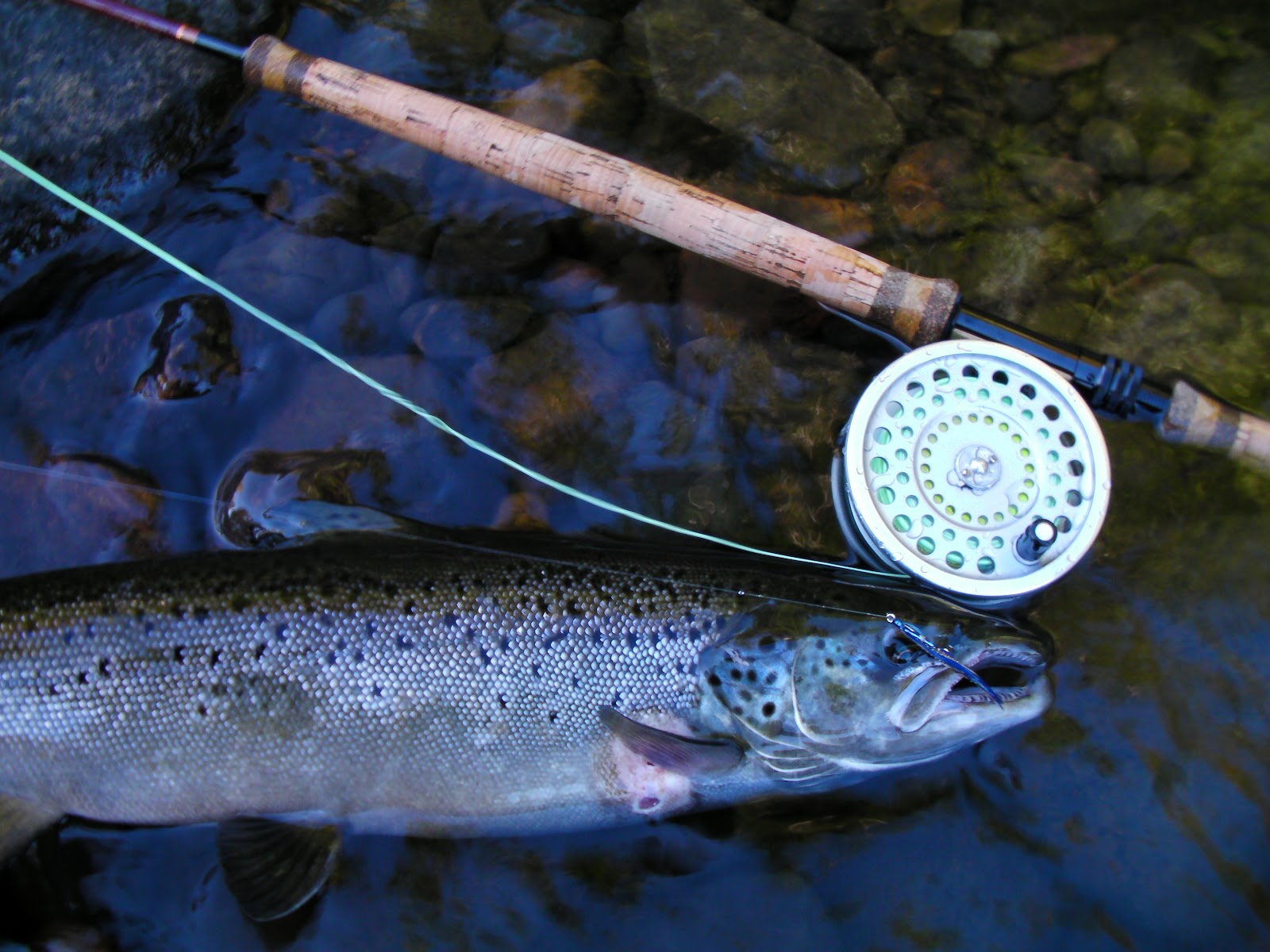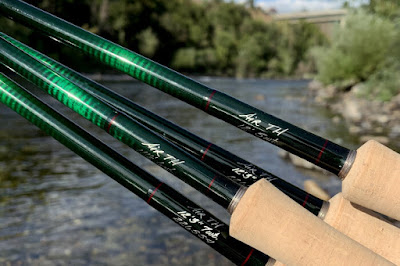SILVER RAT (RED-TAILED) & my first Atlantic Salmon
 The smile on my face says it all. Only thing I'd change about that moment would've been releasing that fish
The smile on my face says it all. Only thing I'd change about that moment would've been releasing that fishIt finally took the fly after my 5 failed attempts at setting the hook! One would be so lucky to have a second chance, but I got 5 chances on the first salmon I ever encountered!!! Luckily, I had a very experienced salmon fishing friend, Joe, that walked me through what to do after such a scenario. He definitely had a lot to do with me hooking and landing that fish! What made it even more special was the fact that I tied the Silver Rat that got him. One of the first salmon flies I ever tied.
My introduction to tying salmon flies came from a flyfishing magazine article. I tried to copy the classic Victorian married wings displayed on the pages with the trout tying material I had. They looked brutal!
My naive 17 year old self believed that the beautiful gaudy patterns in those magazines were the only kind of flies that would get me a salmon. I was in awe of them, but discouraged that I could never achieve the skills required to tie such flies in the few weeks before my first trip. I had no clue about hairwings or anything salmon fishing at that point. Luckily, the closest fly shop was a 20 minute drive from my home. The fly shop owner's help, reading books, and salmon fishing friends' insights put me on the right track.
With the right knowledge, tools, and materials, I sat and tied my first hairwings. I was told that to start, all I really needed were blue charms, black bear green butts, silver rats, green machines, and undertakers, each in sizes 6, 8, and 10. Preferably in double hooked versions.
I tied a bunch of each until I felt I had a good version of each pattern in each size. They were tied according to the materials list printed in the books I used for reference. Except for the Silver Rat. The recipe calls for a golden pheasant crest tail. I thought it would look better with a red tail, so my rats had red hackled tails on them. I sometimes tie them with a golden pheasant crest and redhackles fibers veiled over. I really don't think it matters much to the salmon. I tie what pleases me and hope it will please a salmon too!
The size 8 red-tailed silver rat hooked me my first salmon! Joe thought there was something to the red tail and that may have been why the suicidal salmon came after it 5 times! He mentioned it to a local fisherman who tied some up and hooked 2 fish the following days. Word got out and red tails appeared on silver rats for a little while on that river, outfishing most other patterns that summer! It really boosted my ego at the time! It also created endless questions on the mysteries of salmon fishing and I wanted answers!
I was hooked!! Hard.
But over time, I came to realize that the old adage, "the fly that's fished most, will catch the most fish", holds true for the most part. I also learned that salmon behavior is impossible to predict. Like all animals, humans included, salmon will have an ever changing temperament according to the conditions and reality it is facing in real time. From the time it enters fresh water to the time it goes back to sea it is adapting to the conditions presented. We as fishermen should try to be aware of those conditions and try to adapt if we want to be successful.
But luckily, we have a choice!
We can try to find the answers to all of salmon fishing's questions or we can mindlessly step/cast down a pool, fishing with only a blue charm, black bear green butt, green machine, undertaker, or silver rat(red tailed of course) enjoying the feeling of being in the moment until a tug at the end of your line makes you think,"is it the red tail that got that salmon interested?"
The Red-tailed Silver Rat has served me well over the years, but it's probably because I use it more than the original Silver Rat. Here is the materials list for my variation. Feel free to experiment with your own variations. Who knows...maybe a blue-tailed Silver Rat will be the next hot fly on your river!
HISTORY
Some excellent books such as Joe Bates', "Fishing Atlantic Salmon", and Stuart's and Allen's, "Flies for Atlantic Salmon", originate the RAT to Roy Angus Thomson in the year 1911. His initials were the inspiration for the "RAT" name. Story goes that Thompson tied a fly with the fur of a gray fox that Col. Monell had harvested. Their guide told them that gray colored flies worked best for the river they were to fish. He later called it the Gray Rat.
Variations of the Gray Rat followed over time with the Rusty Rat and Silver Rat being some of the most renown until this day.







Comments
Post a Comment